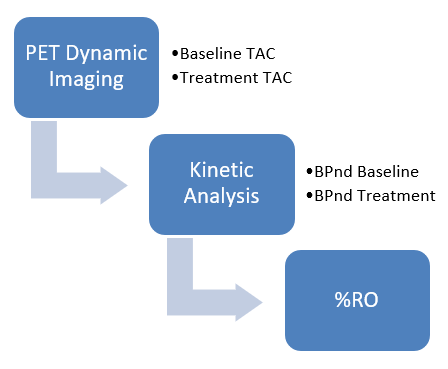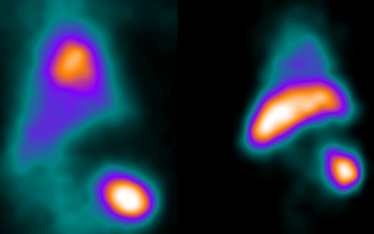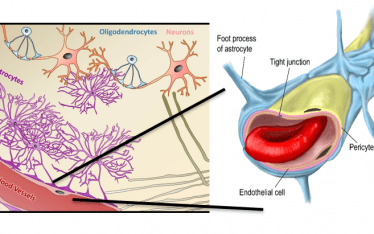PET receptor occupancy analysis is a type of radiotracer tracer study that measures the change in receptor occupancy of a radiotracer caused by the test drug. The radiotracer defines 100% receptor occupancy (baseline) and if a test drug is occupying receptors (treatment) then fewer receptors are available to bind the radiotracer and that change is the drug RO.
Receptor occupancy of a drug is typically expressed as

Note the equation does not compare absolute amounts (nmol/cc) of specific receptor bound by the radiotracer or drug, indeed this cannot easily be measured in vivo. What can be measured are the kinetics describing specific receptor binding. That specific binding is best defined by the binding potential BPnd, the ratio of specific to nondisplaceable radioligand, or in pharmacologic terms (VT – VND)/VND , or in kinetic rate terms k3/k4. The BPnd is unitless and changes if the total available receptor changes due to the test drug.
It is clear from the %RO equation that the experimental end point is the BPnd[baseline] and BPnd[treatment]. These values are themselves the result of a multi-step process.

The process begins with the design of the PET study. The study design could be simple,
- %RO of a test drug at a single concentration (therapeutic dose)
or complex,
- Comparison of multiple drugs requiring determination of %RO50 from 3 or more concentrations of each test drug.
We will get into study design details in later parts of this series. For all studies, the PET study acquires radiotracer data over a period of 60-90 minutes. This data is the Time Activity Curve, TAC. The data is typically kBq/cc over time. In the example below from a rat [C11]carfentanil PET study the TAC curves of two VOI brain (green) and cerebellum (black) are shown.

Want to learn more?
Download the full article to learn more about how to design an effective receptor occupancy study.


